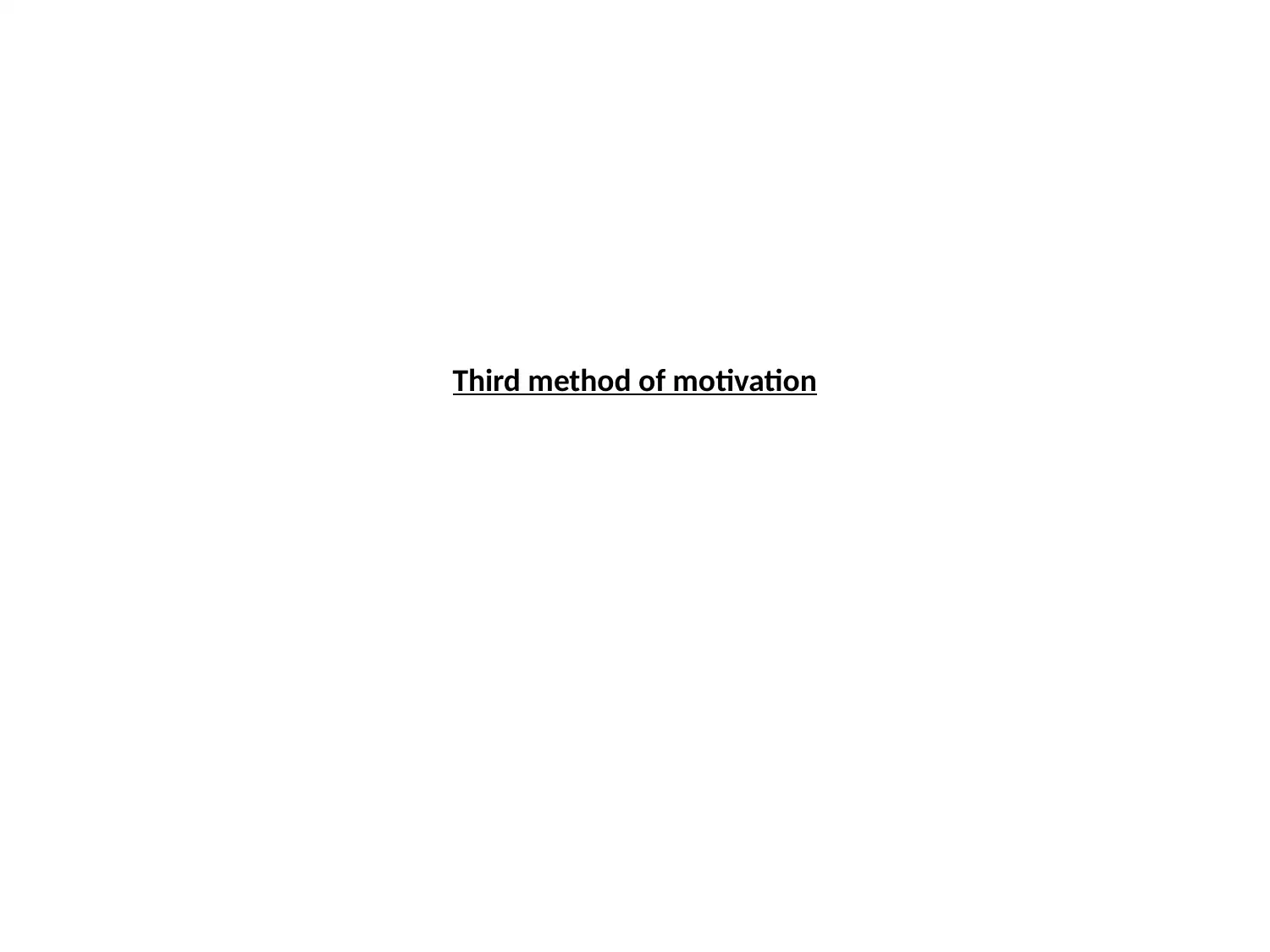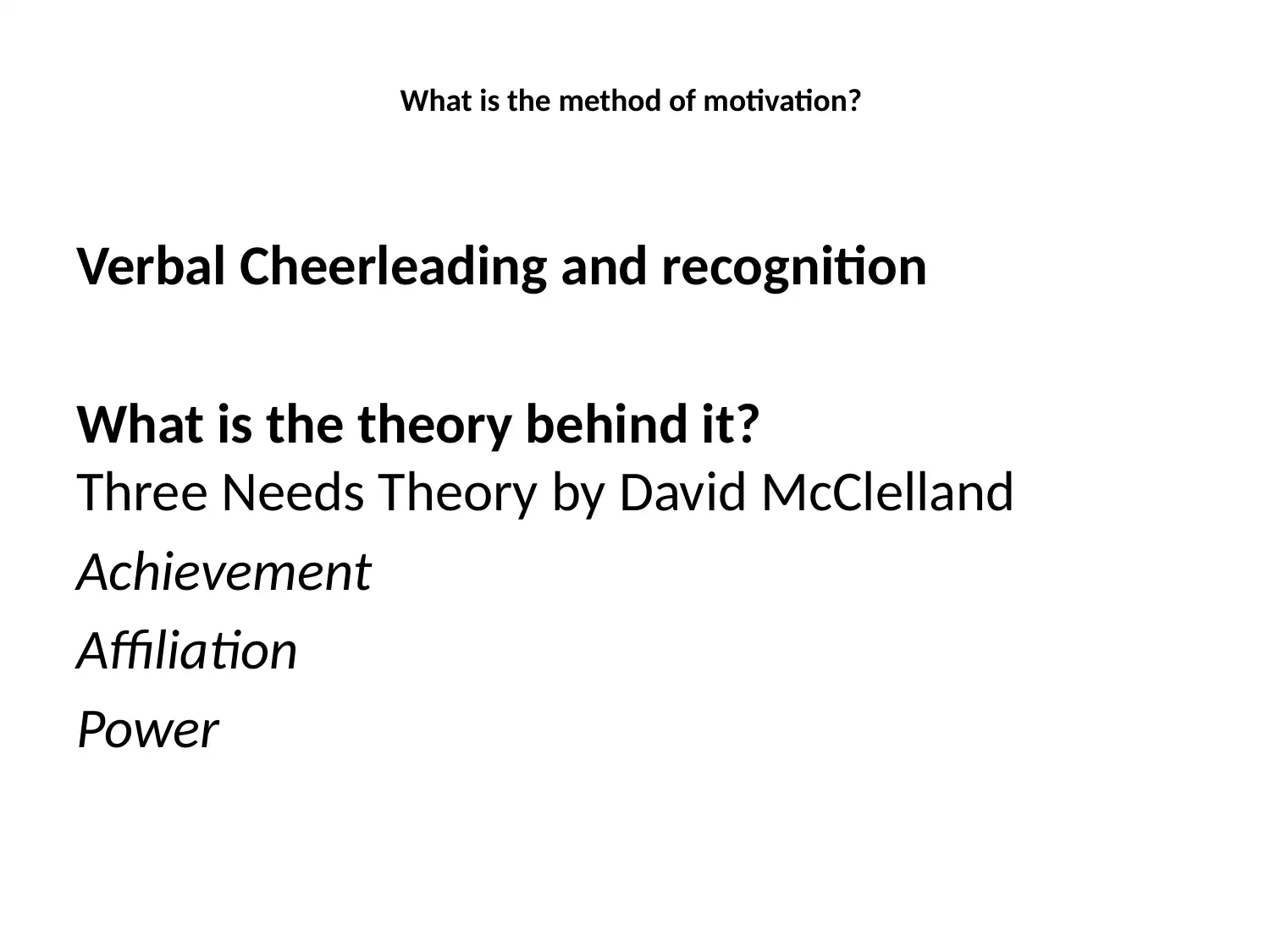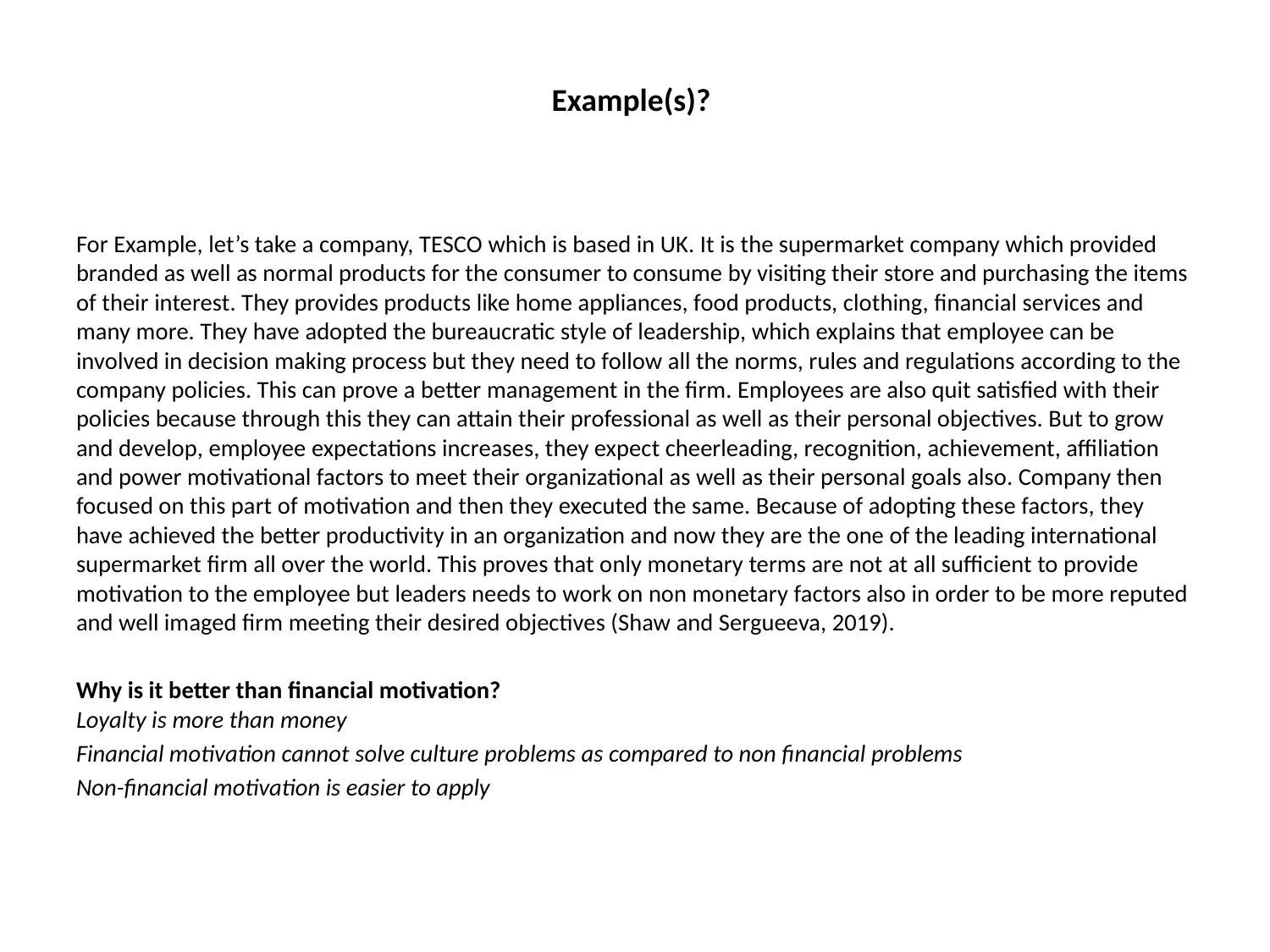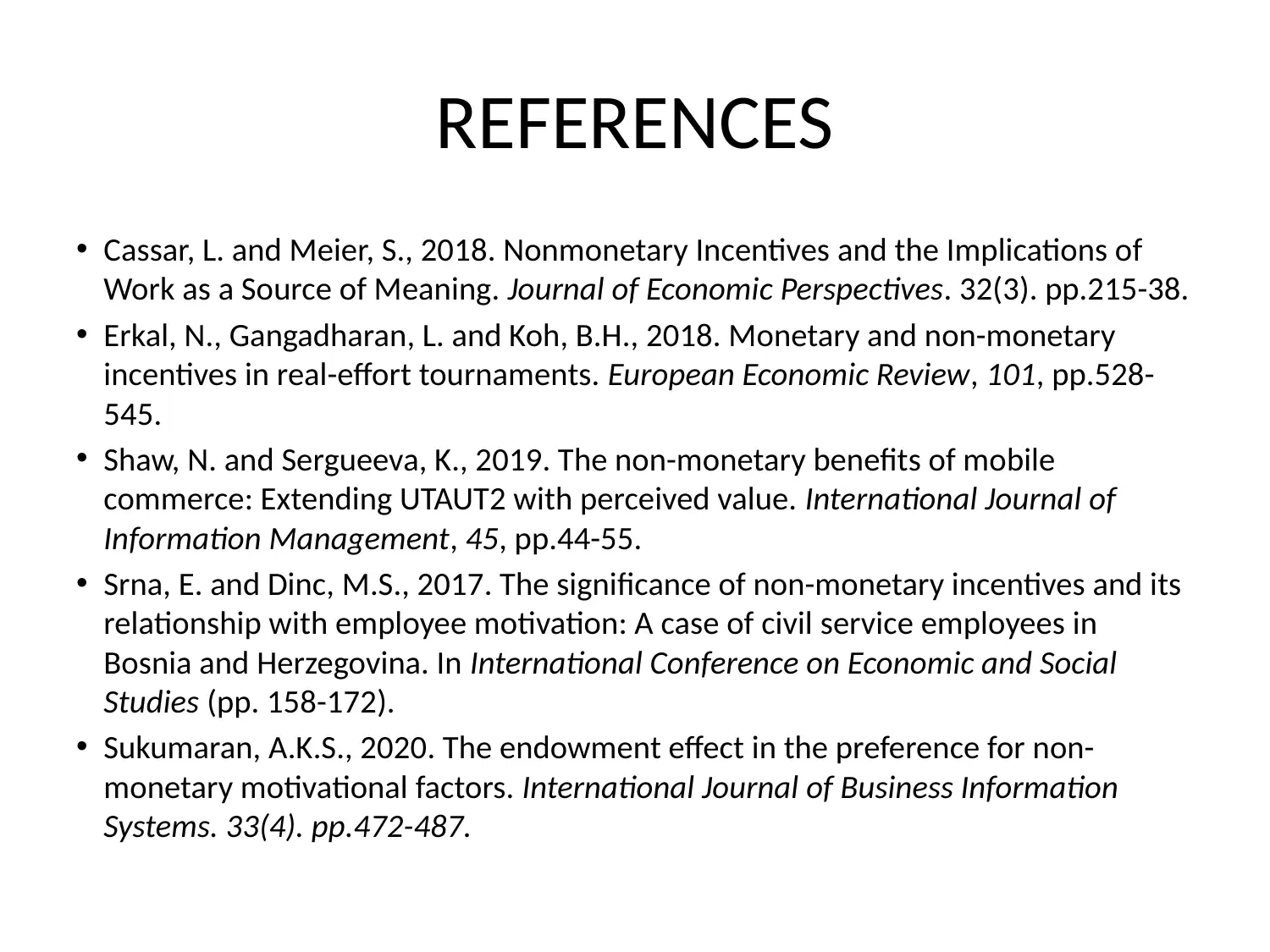Analyzing Verbal Cheerleading: A Method of Non-Financial Motivation
VerifiedAdded on 2023/01/04
|4
|517
|86
Essay
AI Summary
This essay discusses verbal cheerleading and recognition as a method of non-financial motivation, contrasting it with financial incentives and highlighting its impact on employee loyalty and organizational culture. It uses David McClelland's Three Needs Theory to explain the underlying principles, focusing on achievement, affiliation, and power. The essay provides an example of TESCO, a UK-based supermarket, which adopted this approach alongside a bureaucratic leadership style to enhance employee satisfaction and productivity. By focusing on non-monetary factors like cheerleading, recognition, and opportunities for achievement, TESCO achieved significant growth and became a leading international supermarket firm. The essay concludes that non-monetary incentives are crucial for motivation, fostering loyalty, and addressing cultural issues that financial rewards alone cannot solve, citing several academic references to support its claims.
1 out of 4











![[object Object]](/_next/static/media/star-bottom.7253800d.svg)